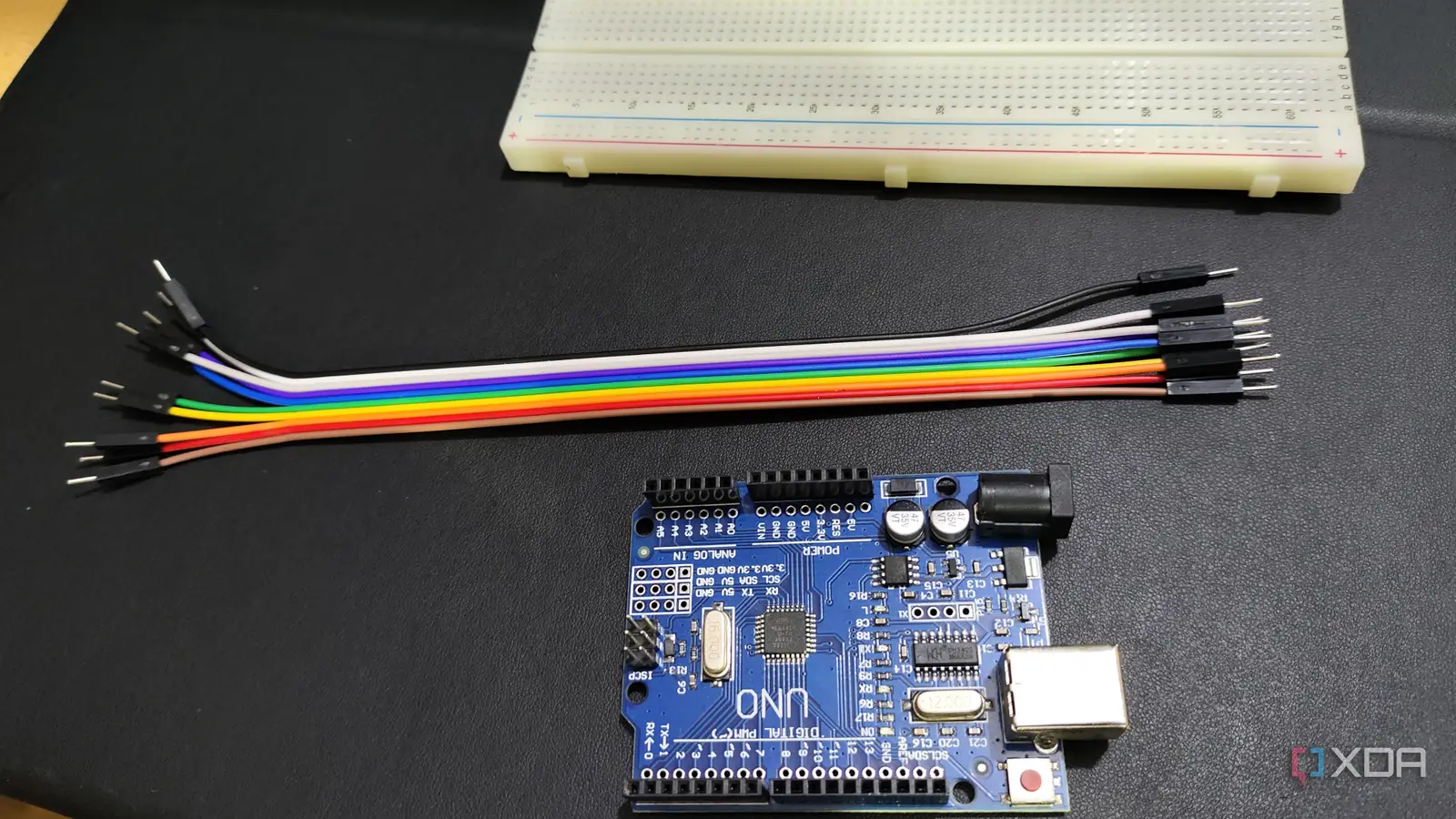Copyright XDA Developers

The recent news of Qualcomm acquiring Arduino has stirred both excitement and unease in the maker and open-source hardware communities. Reports suggest that Arduino will retain its brand, tools, and mission under the deal and will continue to support chips from multiple manufacturers. Even so, the move raises several concerns about the future of Arduino, especially for hobbyists, educators, and smaller developers. Here are five reasons why I’m personally worried about this acquisition, based on what’s been shared publicly so far. Risk to open source ethos Will Arduino’s core openness really stay intact? One of my top concerns is whether Arduino’s foundational open source approach can survive under the control of a large corporation like Qualcomm. Arduino has always been a champion of accessible hardware and software, with design files, libraries, and community contributions forming a large part of its identity. The company has said it will retain its independent brand and open source philosophy, but guarantees of independence are only as strong as the follow-through. Past acquisitions have shown that open projects can gradually drift toward corporate priorities. Another issue is that Qualcomm may have business incentives that differ from Arduino’s community roots. Qualcomm is a major chip company with a strong interest in promoting its own silicon ecosystem. The concern is that over time, multi-vendor support and the freedom to experiment could be compromised in favor of Qualcomm’s hardware or platforms. Some observers have already suggested that Arduino’s culture may tilt toward industrial or enterprise projects rather than grassroots maker efforts. If that happens, educational users and hobbyists could find themselves pushed aside. The open source community is especially sensitive to subtle changes in accessibility. Licensing modifications, restrictions on clone boards, or a slowdown in releasing design files could erode trust quickly. While early statements indicate that hardware design files will remain open, the real test will be consistency across future boards. If Qualcomm fails to uphold that openness, Arduino could lose the very community that built its reputation. Potential for vendor lock-in Could we see Arduino limited to the Qualcomm ecosystem? Another concern is that this acquisition might lead to greater lock-in around Qualcomm’s hardware and software stack. Arduino’s success has long depended on its compatibility with a wide range of microcontrollers and processors. When a dominant player takes control, support for other chips often becomes a lower priority. Although Qualcomm has said that Arduino will continue to support multiple vendors, that commitment may weaken over time. The launch of the new UNO Q board, which uses a Qualcomm processor paired with a microcontroller, already signals a shift in that direction. If future Arduino boards rely heavily on Qualcomm-specific features, developers using other chips could find themselves sidelined. That could make it harder for smaller developers and educators to build affordable projects, and it might limit creativity across the ecosystem. Vendor lock-in also affects supply chains and affordability. If Arduino products become dependent on Qualcomm’s chips, low-cost clones and community-supported variants could disappear. As a result, the affordability and accessibility that defined Arduino might fade. That would be a severe blow to the maker community that values experimentation without high financial barriers. Shift in audience and priorities Will the maker and educational community be left behind? Arduino has always been about empowering hobbyists, students, and educators to create and learn. The risk now is that its focus could shift toward commercial and industrial markets that align with Qualcomm’s business interests. Qualcomm’s primary goals often involve scaling products, monetizing edge computing, and integrating artificial intelligence at the hardware level. Those are worthwhile ambitions, but they don’t necessarily benefit first-time makers or educators. This could mean new product designs will emphasize performance, connectivity, and advanced capabilities over simplicity and affordability. That might make Arduino less approachable for beginners and classrooms. The platform’s documentation, tutorials, and community support could begin catering to professionals rather than enthusiasts or students. Once that happens, the sense of inclusivity that defined Arduino could weaken. There is also the matter of accessibility in education. Arduino has always been a cornerstone of STEM programs and introductory electronics courses. If prices rise and entry-level boards become harder to find, educators might turn elsewhere for classroom tools. This shift could unintentionally alienate the very audience that made Arduino successful. Pricing and accessibility concerns Could costs rise and accessibility drop for smaller users? Affordability has always been one of Arduino’s greatest strengths. The new UNO Q, priced between $44 and $59 depending on configuration, is already more expensive than many traditional Arduino boards. While the increased performance may justify the cost, it raises questions about where the brand is headed. If future boards continue to adopt premium features, Arduino may drift out of reach for budget-conscious users. Price is only one part of accessibility. Many makers rely on the easy availability of components, compatibility with third-party boards, and reliable sourcing from local suppliers. If Qualcomm centralizes production or limits distribution to specific regions or partners, it could make Arduino boards harder to obtain. This would be especially problematic for international educators and makerspaces. Another concern is that resources could shift toward enterprise-level clients instead of individual creators. Larger organizations might benefit from Qualcomm’s manufacturing scale, while smaller users see fewer affordable options. That kind of divide could erode the inclusive spirit that made Arduino so appealing in the first place. Community trust and independence Will Arduino really stay independent in spirit? Community trust has always been central to Arduino’s identity. The brand’s strength comes from its open collaboration, transparency, and willingness to engage with users at every level. When a company as large as Qualcomm steps in, the natural worry is whether that spirit can survive. Even small changes in how projects are managed or how decisions are made can have lasting effects. Community members are already questioning what this means for clone boards, licensing, and user input in future development. If Arduino’s roadmap starts aligning more closely with Qualcomm’s corporate strategy, it might lose the community’s confidence. Once trust fades, it’s hard to rebuild, and Arduino’s ecosystem could fragment as users migrate to other platforms. True independence is more than a statement in a press release. It’s a long-term commitment to openness and collaboration. If Qualcomm truly wants to preserve Arduino’s identity, it will need to prove that commitment with transparency, consistent licensing practices, and a continued focus on the needs of individual makers. Anything less would mark a loss for the open hardware movement. A possible upside worth acknowledging Qualcomm’s history with open source could help While there are reasons to be cautious, there is also a credible argument that this acquisition might turn out to be beneficial. Qualcomm has a history of engaging with open-source software and contributing to major projects, such as the Linux kernel, through partnerships with organizations like Linaro. The company also has open-sourced tools, frameworks, and developer resources that extend beyond its hardware. That demonstrates an awareness of the value of collaboration and community-driven innovation. The acquisition could help Arduino grow beyond its current limits while maintaining its identity. In the past, Qualcomm has transferred community initiatives such as its AllJoyn IoT framework to neutral governance under the Linux Foundation, creating the AllSeen Alliance. Moves like that suggest a willingness to support open ecosystems rather than control them. If the same philosophy is applied to Arduino, it could bring increased resources, better hardware integration, and stronger long-term sustainability without sacrificing openness. In this light, the acquisition could help Arduino grow beyond its current limits while maintaining its identity. Qualcomm’s scale could enhance manufacturing, global distribution, and technical capabilities, making it easier for more people to access advanced hardware. If Qualcomm follows through on its public commitment to open development, this partnership could strengthen the maker community rather than weaken it. What this deal could mean for makers Qualcomm’s acquisition of Arduino could bring powerful new capabilities, wider distribution, and more robust manufacturing. However, there are valid concerns about openness, vendor lock-in, pricing, shifting priorities, and community trust. If Qualcomm respects Arduino’s culture and community, the partnership could strengthen both brands. But if corporate goals take over, it risks alienating the very people who made Arduino a household name in maker culture.



